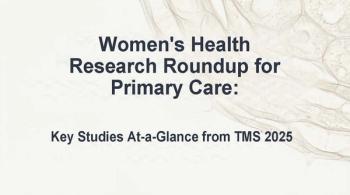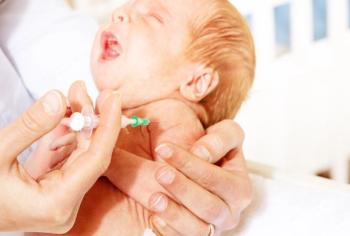
Lice Infestation and Shortness of Breath in the ED
At first the patient's only complaint is dyspnea; 30 minutes later he is in cardiac arrest. What happened? What's your diagnosis?
History of present illness. A 42-year-old homeless man is brought by ambulance to the emergency department for feeling short of breath. Before the nurses take him to the shower to rinse off the thousands of lice on his body the only conversation you have with him is his request for ice water. When he comes back from his shower the nurses tell you he became suddenly lethargic with labored breathing.
Initial vital signs and physical examination. Vital signs all normal. Physical exam notable for lice all over the place (Figure at top right). Patient requesting ice water.
Post-shower vital signs and physical examination. Patient is tachycardic and tachypneic. Physical exam is notable for lethargy, delirium, and dark skin with pale palms. It was hypothesized that the activity of the vasodilation from hot water may have contributed to this change.
30 minutes later. Patient in cardiac arrest. Lab results all still pending so lab contacted for urgent return. They requested a redraw for “contaminants.”
Initial differential diagnosis: Congestive heart failure, pneumonia, diabetic ketoacidosis, anemia
Initial diagnostic testing
Labs: Hb, 1.9 g/dL; PLT, 500 x 109/L, WBC, 8 x 109/L; MCV, normal at 85; CHEM 7: BUN/Cr, 58/3.6; lactate: 8 mmol/L
Imaging: chest x-ray clear
Guaiac: hemoccult negative
Questions
- What diagnosis do the labs suggest?
- What should you do next?
Please click here for
Answers
- What do the labs suggest? Severe normocytic anemia, renal failure, and severe acidosis
- What should you do next? ACLS and O+ blood transfusion. Intubation with vent settings matching his preintubation spontaneous respirations.
Discussion
Lice are human parasites that feed on blood. They most commonly inhabit the scalp and may cause itching, but often go unnoticed for prolonged periods. The diagnosis is made by finding live lice, which are dark in color, or lice eggs, which are dark in color until the lice hatch and then appear light. Lice may carry diseases including typhus, relapsing fever, and trench fever that can be passed to humans. Severe lice infestation can lead to iron deficiency anemia, as in this case.
Treatment. Treatment of lice infestation is typically with topical agents combined with the use of a nit comb and/or other means of physical removal. The home must also be treated, either by an exterminator or by washing all clothes and linens in hot water, bagging toys and vacuuming the home and all vehicles. For more details, click on sample page in Figure above to enlarge, then focus on highlighted area.
Case conclusion. The patient coded multiple times, but was eventually stabilized and went to the ICU, where he slowly had a complete recovery.
Result of additional lab studies:
Nucleated RBC: 14 x 103/µL
Polychromasia/anisocytosis/ovalocytes: all 1+
Haptoglobin/bili/LDH: all normal
Total iron: 15 µ/L (normal 65-175 µ/L)
Note: The cell types are all consistent with iron deficiency anemia. It was unclear why the MCV was normal. Perhaps concomitant folate or B12 deficiency.
Lessons from the case
- When someone has dark skin, pallor may not be apparent, but you will see it if you look at their palms.
- When you intubate a patient with severe metabolic acidosis or Kussmaul breathing, start with initial vent settings that are similar to patient’s spontaneous respiration. This may be a rate of 40 or more.
- Severe lice infestation can cause severe anemia:
https://www.ncbi.nlm.nih.gov/pubmed/20656443
For addtional information, see the
Stay in touch with Patient Care® Online:
→Subscribe to our
Newsletter
Enhance your clinical practice with the Patient Care newsletter, offering the latest evidence-based guidelines, diagnostic insights, and treatment strategies for primary care physicians.


















































































































































































































































































